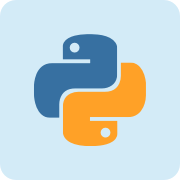Python参考手册
运行 | Runtime
__future__
源代码: Lib / __ future__.py
__future__ 是一个真正的模块,并有三个目的:
- 为了避免混淆分析导入语句的现有工具并期望找到它们导入的模块。
- 为确保将来的语句在2.1之前的版本中运行,至少会产生运行时异常(导入
__future__将失败,因为在2.1之前没有该名称的模块)。
- 记录何时引入了不兼容的变更,以及何时将变为强制变更。这是可执行文档的一种形式,可以通过导入
__future__并检查其内容以编程方式进行检查。
每个陈述__future__.py的形式如下:
FeatureName = _Feature(OptionalRelease, MandatoryRelease,
CompilerFlag)其中,通常OptionalRelease小于MandatoryRelease,并且都是与以下形式相同的5元组sys.version_info:
(PY_MAJOR_VERSION, # the 2 in 2.1.0a3; an int
PY_MINOR_VERSION, # the 1; an int
PY_MICRO_VERSION, # the 0; an int
PY_RELEASE_LEVEL, # "alpha", "beta", "candidate" or "final"; string
PY_RELEASE_SERIAL # the 3; an int
)OptionalRelease记录功能被接受的第一个版本。
在MandatoryRelease尚未发生的情况下,MandatoryRelease预测该特征将成为该语言的一部分。
其他强制性发布 记录当该特征成为该语言的一部分时; 在此处或之后的发行版中,模块不再需要将来的语句来使用有问题的功能,但可能会继续使用此类导入。
强制释放 也可能是None,这意味着计划中的功能被删除。
类_Feature的实例有两个相应的方法,getOptionalRelease()和getMandatoryRelease()。
CompilerFlag是应该在内建函数compile()的第四个参数中传递的(位域)标志,以便在动态编译的代码中启用该功能。 该标志存储在_Feature实例的compiler_flag属性中。
不会从中删除任何功能说明__future__。自Python 2.1推出以来,使用这种机制已经找到了进入该语言的途径:
特征 |
可选 |
强制性的 |
影响 |
|---|---|---|---|
nested_scopes |
2.1.0b1 |
2.2 |
PEP 227:静态嵌套示波器 |
generators |
2.2.0a1 |
2.3 |
PEP 255:简单的发电机 |
division |
2.2.0a2 |
3.0 |
PEP 238:更改部门操作员 |
absolute_import |
2.5.0a1 |
3.0 |
PEP 328:进口:多线和绝对/相对 |
with_statement |
2.5.0a1 |
2.6 |
PEP 343:“带”声明 |
print_function |
2.6.0a2 |
3.0 |
PEP 3105:使打印功能 |
unicode_literals |
2.6.0a2 |
3.0 |
PEP 3112:Python 3000中的字节文字 |
扩展内容
未来的陈述编译器如何处理未来的进口。
运行 | Runtime相关

Python 是一种面向对象的解释型计算机程序设计语言,由荷兰人 Guido van Rossum 于1989年发明,第一个公开发行版发行于1991年。 Python 是纯粹的自由软件, 源代码和解释器 CPython 遵循 GPL 协议。Python 语法简洁清晰,特色之一是强制用空白符( white space )作为语句缩进。
| 主页 | https://www.python.org/ |
| 源码 | https://github.com/python/cpython |
| 版本 | 2.7 |
| 发布版本 | 2.7.13 |
 加载中,请稍侯......
加载中,请稍侯......